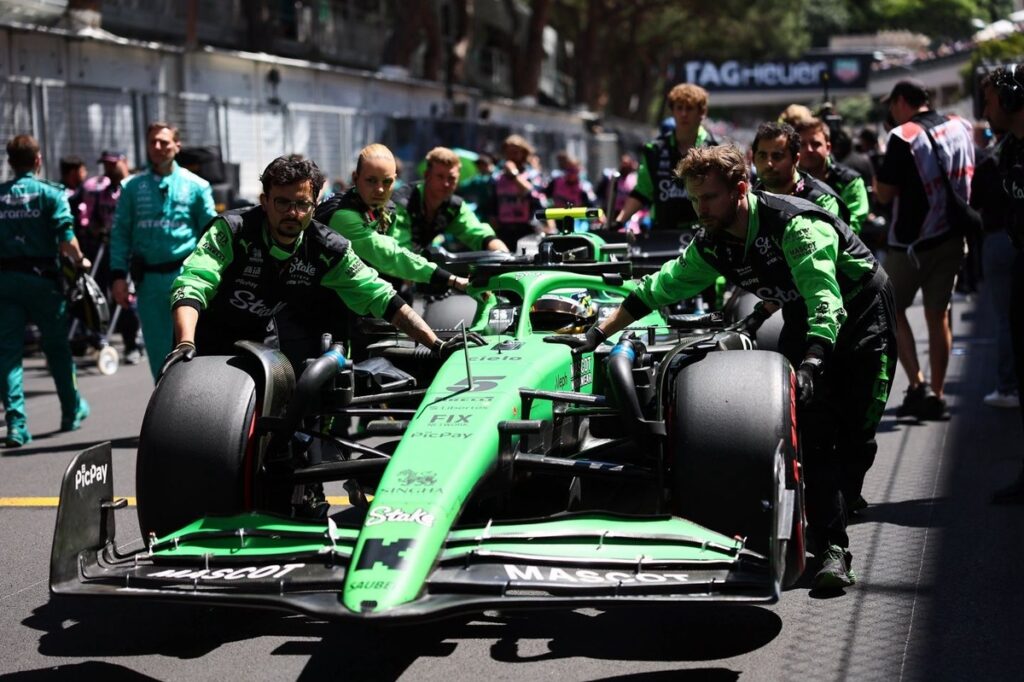Transforming Sauber: The Road to Audi’s F1 Debut and Long-Term Ambitions
Nearly a year has passed since Mattia Binotto stepped into the role of Chief Operating and Technical Officer at Sauber, marking a pivotal phase in the Swiss team’s evolution. As the countdown begins to its rebranding as Audi, the German automotive giant is preparing to make its inaugural entry into Formula 1, a venture that promises to reshape the sport’s landscape.
Entering F1 for the first time, Audi faces the formidable challenge of elevating a team that has struggled to reach the podium since 2012-over 250 Grands Prix ago. The task is compounded by current regulations, including budget caps and restrictions on aerodynamic testing, which have prompted the team to prioritize development for the upcoming 2026 technical regulations. This strategic focus aims to lay a solid foundation for future success, even as the 2025 season unfolds with its own set of hurdles and opportunities, exemplified by Nico Hülkenberg’s unexpected seventh-place finish in Australia.
Strategic Long-Term Vision: Building Foundations for 2030
Binotto envisions a five-year timeline for Audi to establish itself as a championship contender, targeting 2030 as the year to challenge for titles. While ambitious, such long-term goals are not uncommon in F1, where teams often set multi-year plans to develop their infrastructure, personnel, and technological capabilities. Historically, Ferrari’s dominance in the early 2000s, under Jean Todt’s leadership, exemplifies how a well-structured approach can lead to sustained success after years of rebuilding.
Binotto draws parallels with Ferrari’s evolution, emphasizing that even legendary teams require patience and strategic planning. “When I was at Ferrari, I experienced firsthand how it takes time to build a winning culture,” he explains. “It’s not just about hiring top talent but also about developing the right infrastructure, fostering a cohesive team spirit, and establishing a resilient organizational culture. Audi’s integration into F1 will follow a similar path, blending German precision with Swiss craftsmanship.”
Fostering a Unified Team Culture Across Borders
One of the key challenges for Audi is harmonizing its corporate culture with that of Sauber, a team renowned for its independent character and Swiss heritage. Binotto highlights that cultural integration is a gradual process, requiring patience and deliberate effort. “When we talk about culture, we mean behaviors, team cohesion, and shared values,” he notes. “It’s unrealistic to expect immediate results; it will take approximately three years to establish a strong, unified identity, with another two years to solidify it.”
To facilitate this cultural fusion, Audi plans to establish a new technical center in the UK, strategically located in the heart of the renowned motorsport valley. This facility aims to attract top engineering talent from around the world, particularly from the UK’s vibrant motorsport ecosystem, which has produced numerous F1 champions and innovative engineers. The center is expected to open within weeks, initially employing around 20 specialists, serving as a gateway for talent reluctant to relocate to Switzerland.
Investing in Infrastructure and Talent Across Continents
The development of a world-class team hinges on robust infrastructure and skilled personnel. Audi’s plans include modernizing its existing facilities in Hinwil, Switzerland, and Neuburg, Germany, to support the team’s evolving needs. This includes constructing new simulation centers and expanding manufacturing capabilities-an essential step given the complexities of F1 engineering and the need for rapid innovation.
Binotto emphasizes that these upgrades are part of a broader, multi-front effort. “We are working on several initiatives simultaneously-building new structures, recruiting talented engineers, and enhancing our internal production,” he states. “Expanding the Hinwil base is particularly challenging due to space constraints, so we are considering external options to ensure we meet our ambitious goals.”
Overcoming Challenges in a Competitive Environment
While Audi’s entry into F1 is highly anticipated, it comes with significant hurdles. The team must develop a competitive power unit, build a cohesive organizational culture, and establish a strong technical foundation-all within a highly competitive environment. The challenge is compounded by the fact that Audi aims to be a major engine supplier, a role last undertaken by Honda over a decade ago, with expectations that initial performance may not be at the very top.
Despite these obstacles, Binotto remains confident. “We believe in our capabilities and are committed to making this transition successful,” he affirms. “With the right investments, strategic planning, and a dedicated team, Audi can carve out its place in F1’s elite.”
Looking Ahead: The Future of Audi in Formula 1
As Audi prepares to debut in the sport, the focus remains on long-term growth and sustainable success. The upcoming Sauber Center of Excellence in the UK will serve as a critical hub for talent development, innovation, and collaboration. Meanwhile, ongoing infrastructure upgrades in Hinwil and Neuburg will support the team’s technical ambitions.
Binotto’s vision is clear: to build a resilient, competitive team capable of contending for championships by the early 2030s. With strategic investments and a focus on cultural integration, Audi aims to not only participate but to thrive in the fiercely competitive world of Formula 1.
Stay tuned for updates on Audi’s journey, as the brand aims to redefine its legacy in motorsport and demonstrate that patience, innovation, and strategic vision can lead to victory.

